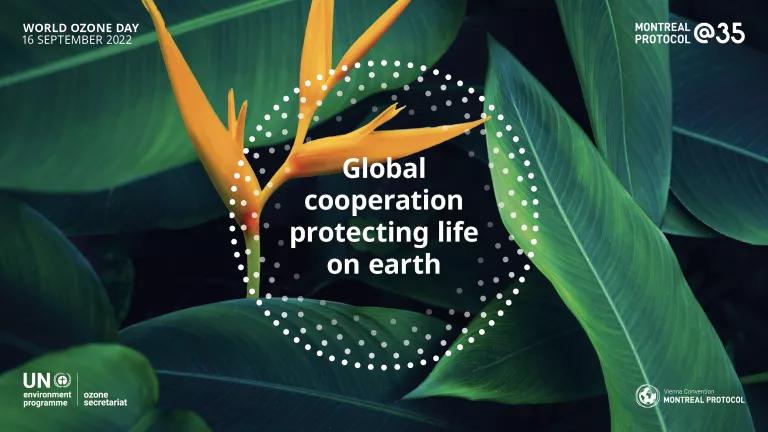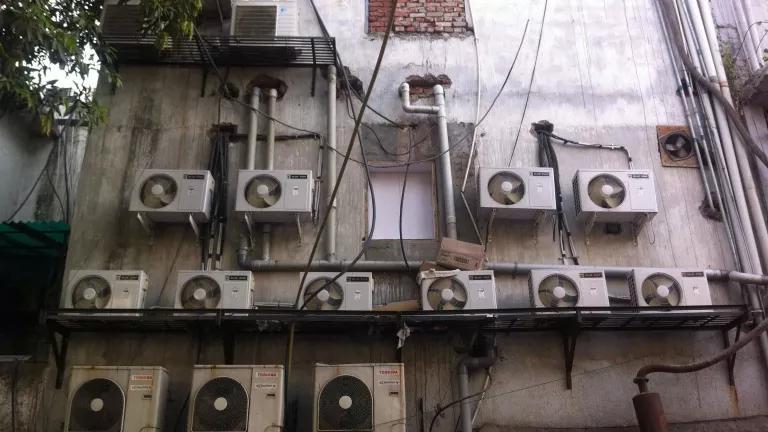The annual Meeting of Parties to the Montreal Protocol – the treaty that saved the ozone layer and is now protecting the climate – wrapped up last week with a heavy dose of cake and elbow grease (but not at the same table!). Other than a brief respite to celebrate another half-decade of environmental leadership, the treaty’s diplomats set the gearshift to high and cranked through a large backlog of work that had piled up during the COVID-19 pandemic.
The top-line achievement coming out of the meeting is that countries are signaling interest in taking a generous approach to funding implementation of the Kigali Amendment, the 2016 global pact to phase down hydrofluorocarbons (HFCs) worldwide. Next year parties will agree to a funding package for the Multilateral Fund (MLF), the treaty’s implementing fund, for the years 2024-2026. This year countries agreed on the menu of activities potentially eligible for funding in that package by placing them within the scope of a study to determine the amount of funding needed. This year’s agreement included two new items.
First, for the first time, countries recognized the need to allocate funds for improving energy efficiency while phasing down HFCs, a huge opportunity to reduce energy use from the billions of air conditioners, heat pumps, and refrigeration systems set to be installed around the developing world in the coming decades. The basic idea is that manufacturers can improve energy-related components of their cooling appliances at the same time they make the necessary changes to convert to new, climate-friendly refrigerants. Doing both at once saves significant cost. For next year, funding will potentially be available to cover costs of carrying out pilot projects that include energy efficiency components, to help the treaty better understand the costs and benefits of energy investments.
Second, as a part of the same funding discussion, a funding window is set to be considered to improve lifecycle refrigerant management in developing countries, a huge opportunity to supercharge fluorocarbon emissions reductions. In fact, just last month NRDC and partners EIA and IGSD released a report finding that fluorocarbons deployed in equipment and stockpiles will amount to the equivalent to 90 billion metric tons of carbon dioxide by the end of this century, or several years’ worth of total global carbon dioxide emissions today. NRDC and partners held a standing-room-only side event at the meeting to launch our report about how to responsibly manage these ‘banks’ and avoid their emissions. The funding discussion around lifecycle refrigerant management will start out with a focus on proper end-of-life disposal.

NRDC, EIA, and IGSD side event on Lifecycle Refrigerant Management
The treaty also agreed a host of other positive decisions on Friday. For one, countries agreed to a plan to mainstream energy efficiency-related matters into the annual work of the treaty’s Technology and Economic Assessment Panel (TEAP), a step that will give the issue proper roots in this forum. In the past, an annual “task force” has convened around energy efficiency, only to be reconstituted again each year.
Countries asked the TEAP to investigate a handful of big energy questions next year: the benefits of improving energy efficiency in cooling appliances, availability of top-efficiency models, needs for energy testing and validation, energy performance of climate-friendly foams, barriers to adoption of high energy efficiency products, and the relationship between climate-friendly refrigerants and energy performance. There will be a one-day workshop on energy efficiency adjacent to the MOP next fall.
Negotiators also pressed on the issue of proper monitoring of the atmosphere for emissions of fluorocarbons and other controlled substances. They called on the TEAP to search for possible emissions pathways from industrial processes and asked delegations to provide information on management of carbon tetrachloride produced or used as feedstock in their countries. Carbon tetrachloride, a toxic, ozone depleting substance, has been emitted in larger quantities than expected for several years.
Another atmospheric issue at top of mind is ongoing emissions of HFC-23 – the most potent HFC of all, with climate potency nearly 15,000 times that of carbon dioxide and which is typically created as a byproduct of other fluorinated gas production processes. Countries asked TEAP to identify potential pathways of HFC-23 emissions in the production of other fluorocarbons, compile available information on plants that emit HFC-23, and set out best practices for emissions abatement.
Lastly, parties took steps to stem illegal trade of HFCs by encouraging widespread sharing of enforcement information, adoption of best practices in customs enforcement, and more. There will be a one-day workshop on illegal trade at next summer’s meeting.
NRDC also hosted a side event discussing scenarios for phasing down HFCs in India together with our partners The Energy and Resources Institute (TERI). We discussed a recent paper, led by authors from NRDC, TERI, and others, laying out scenarios for India to phase down HFCs under the Kigali Amendment. There was a robust discussion in the room about the transition in the cold chain, the air conditioning sector, and more.

NRDC and TERI host a side event about cooling in India
After 35 years, the Montreal Protocol has still got it. More than ever, the treaty is showing its adaptability as it grows to tackle new, adjacent environmental issues such as energy efficiency and fluorocarbon banks. It’s also shoring up its core competencies, such as combatting illegal fluorocarbon trade and strengthening its atmospheric monitoring and enforcement mechanisms. At this rate, we’re hot on the trail to shave a few more tenths of a degree off the global thermometer.







